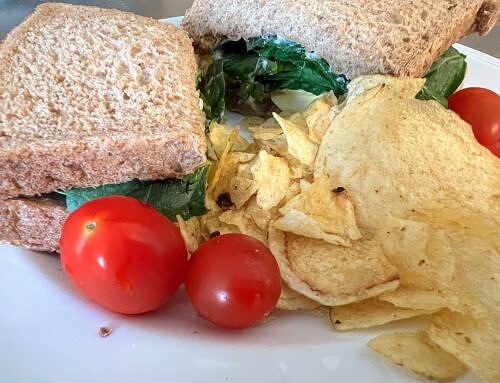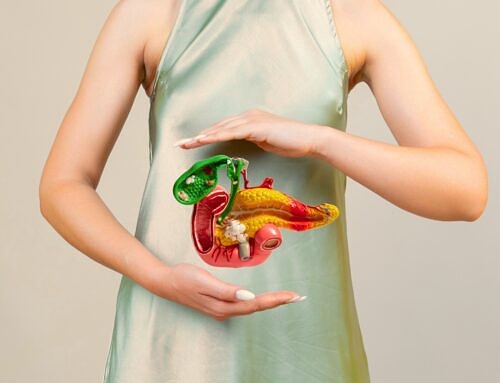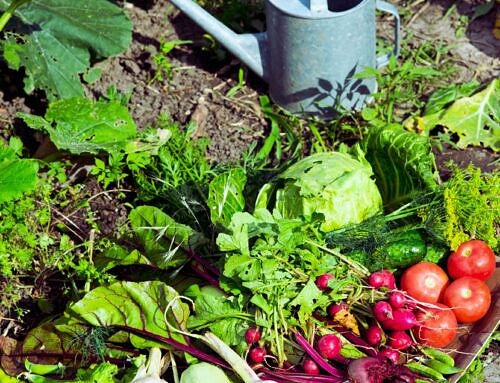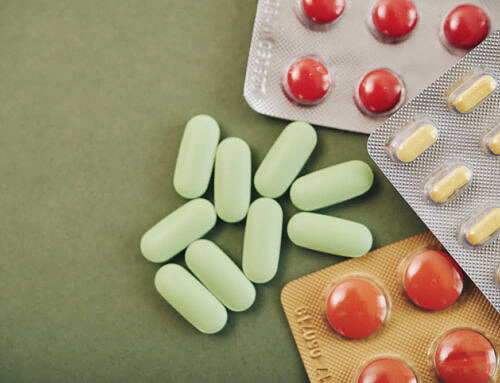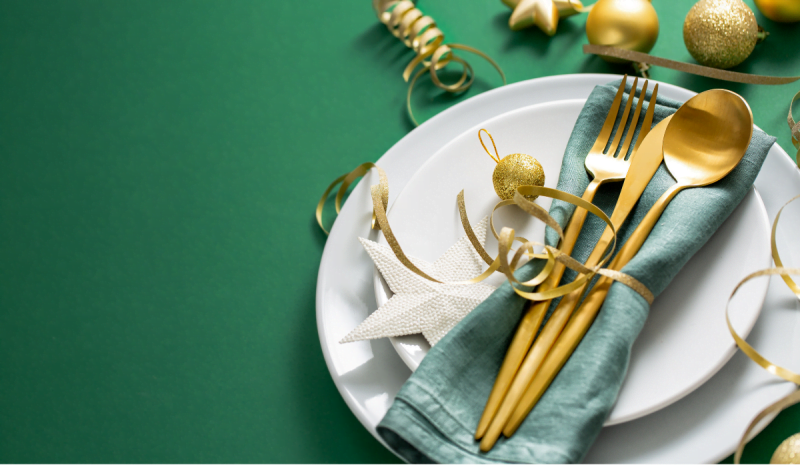
1) The Protein
Christmas is coming, the goose is getting fat. Please put a penny in the old man’s hat. If you haven’t got a penny a ha’penny will do. If you haven’t got a ha’penny then God bless you. (Edith Nesbit Bland)
While the protein part of Christmas dinner may vary between households (even within households if you are like us), goose is a very traditional English Christmas fair. Goose tends to be high in fat when eaten with the skin and fatty layer below it, and is an excellent source of protein along with providing a variety of vitamins and minerals including B vitamins, iron, selenium and zinc. Goose is also rich in phosphorus which we need to produce energy, maintain bones and teeth, and to build muscle tissue. Too much phosphorus may however lead to calcium deficiency. Goose fat contains around 57% ‘healthy’ monounsaturated fat and approximately 28% saturated fat.
A more modern tradition is to eat turkey. While still being protein-rich, it is lower in fat than goose but still providing plenty of B vitamins, iron, phosphorus, potassium, selenium and zinc.
Of course neither of these options are good for vegetarians or vegans. Nut roast may be a fairly predictable alternative, but it is flavoursome and healthful. The best thing for me is that nut roast can be put with all the normal trimmings (as long as they are cooked in a vegetarian-friendly way) so you don’t have to have a completely different Christmas dinner. Nuts typically contain good amounts of unsaturated fat, protein, fibre, B vitamins and other vitamins and minerals. The other ingredients included in the roast will vary depending on the recipe, but generally they will help to boost the nutritional content of the dish. One significant benefit of making your own nut roast is that you can avoid the often nutrient poor ultra-processed commercial products. I’ve even included the recipe for the one I make at the bottom of this page, it is quite simple (I don’t do complicated recipes, I get in too much of a ‘flap’ if I try to juggle too many pans).
2) Potatoes
Boiled, mashed or roasted? I know some of the big-kids amongst us like to create a gravy lake in their mash that they can spill over the rest of their meal when they are ready. In our house we have the mash and roasties – a small portion of each but enough to have a combination of textures and suit the big kids in the family (and the not-so-little one).
Although white potatoes do not count towards our daily vegetable intake, they do provide a range of vitamins and minerals. These include potassium, vitamin C, magnesium, iron and zinc. Of course we need to consider the carbohydrate content here. White potatoes (as opposed to sweet potatoes) are largely made up of starch, which is why they are not counted as a vegetable. If you have a medical need to manage your blood sugar especially, please take care with your portions and the balance of nutrients on your plate overall. Going for a walk after the meal can help us to digest the carbohydrates better and balance our blood sugar. A post-dinner stroll is also a chance to get some fresh air. It is lovely to meet any friends out and about as well.
3) Root Vegetables
Continuing on with the carbohydrate-rich foods, carrots and parsnips are joint item number 3. Unlike white potatoes, these vegetables do count towards your daily intake. Both can be served boiled or roasted, with or without a glaze of butter, maple syrup or honey (naughty I know, but nice).
Besides carbohydrates (more if adding a sugary glaze), carrots and parsnips provide plenty of vitamin C, B vitamins, calcium and manganese. Carrots also add vitamin A in the form of beta-carotene while parsnips add vitamins E and K, and iron.
4) Love ‘me or Hate ’em – Brussels Sprouts
Whatever your thoughts about them, it cannot be denied that sprouts are strongly associated with Christmas dinner. If you grow them, you will know they are a winter vegetable that is at its best once it has been exposed to frost – during the festive season! The ‘sprout tops’ (the bit at the top of the growing stalk) can be eaten like cabbage if you harvest those too. Unfortunately pests tend to make mine less appealing and I don’t want to add chemicals to deter them. Yes, any gardening tips on this problem are welcome!
Sometimes people’s dislike of sprouts is simply due to the cooking method as they are often served mushy. To reduce the risk of mushy sprouts don’t put a cross in the bottom of them and remember they don’t take long to boil or steam (about 5-10 minutes depending on their size). My son likes them roasted.
As I am sure you are aware Brussels sprouts are a good source of fibre (most noticeable if you usually eat a low fibre diet!). Did you also know that they are a good source of vitamins A, C and K, and the B vitamins? They are also good for calcium, choline, copper, magnesium, manganese and zinc, along with many other nutrients. Sprouts even contain omega 3 fatty acids. They really are a nutrition power house.
For those of you who “love ’em”, there is a Brussels Sprout Appreciation Society!
5) Cauliflower
Cauliflower doesn’t normally make it on to the Christmas dinner plate in our house as we have enough on our plates without it. But I know some families enjoy it, especially covered in cheese sauce, and so I decided to include it as item number 5. Nutritionally cauliflower gives you fibre, vitamins C and K, the B vitamins, choline, omega 3 fatty acids, manganese, phosphorus, potassium, protein and magnesium. As with sprouts, the cooking method may affect how well it is accepted by family members. For example, while I don’t mind how it is prepared, my son only likes cauliflower that has been roasted and is going crispy.
You could add extra colour and antioxidants to your plate by choosing a purple-headed variety.
As you can see, the Christmas dinner is a very nutritious meal. However, I know some people find the idea of cooking Christmas dinner quite daunting. I admit I don’t usually do the cooking on Christmas Day, but I do help prepare the veg the day before (keep it in water in the fridge until you are ready to cook it) and I make my nut roast in advance. Both of these actions help reduce the stress of Christmas morning. Although keeping veg prepared in water can reduce the nutritional content slightly, it does allow you to focus on other activities on Christmas morning and help make the day more enjoyable. I also like the advice I’ve seen on social media, which I think comes from a celebrity chef: Christmas dinner is basically a Sunday dinner – if you can cook that OK ordinarily, you can manage Christmas dinner.
Whatever you have for your Christmas dinner, I hope you enjoy it.
Nut Roast Recipe
(source: The Vegetarian Society)
Serves 4-6 people
200g red lentils
1 onion, finely sliced
50g sun-dried tomatoes, drained (oil reserved) and chopped
2 cloves garlic, crushed
50g dried apricots, chopped
200g mixed nuts, chopped
50g mixed seeds
1 ½ tsp dried mixed herbs
1 tsp soy sauce
1 carrot, grated
1 tsp turmeric powder
Salt and pepper
- Preheat oven to 180°C/gas mark 4.
- Cook the lentils in plenty of water for 15 minutes and then drain.
- Heat a little of the sun-dried tomato oil in your largest frying pan and gently fry the onion for 5 minutes.
- Add all the other ingredients except the seasoning and lentils. Stir well.
- Add the lentils, stir well, and add seasoning to taste.
- Pour mixture into a lined loaf tin (approx. 20cm x 10cm). Bake for 50 minutes and allow to cool before slicing.
This recipe is suitable for vegans, but I do find that it doesn’t hold together very well. Therefore as a vegetarian (not vegan) I usually bind it with an egg. It may be that there are vegan-friendly alternatives that will work well too.
